Bone Loss
How to submit an article:
- Registered users can submit any published journal article that has a unique DOI (Digital Object Identifier) name or link to Research Hub.
- For example, you can paste the full DOI link:
https://doi.org/10.1109/5.771073or just the DOI name:10.1109/5.771073into the field above and click submit. - The person who is first to submit a valid article to Research Hub will forever be credited for it, and every article submission earns you +6 Research Points.
Related Topics
Published research studies are articles that present the findings of original research that has undergone a peer-review process and has been made publicly available in scholarly journals, books or other media.
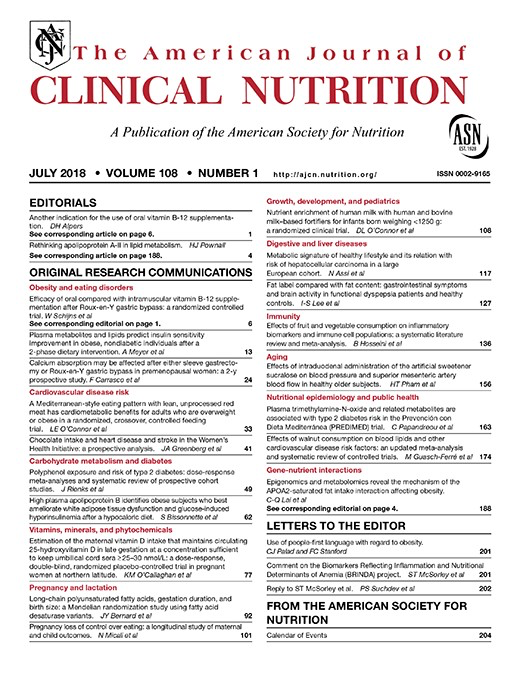
Moderate consumption of freeze-dried blueberry powder increased net bone calcium retention compared with no treatment in healthy postmenopausal women: a randomized crossover trial
2023 Aug The American Journal of Clinical Nutrition Hodges JK, Maiz M, Cao S, Lachcik PJ, Peacock M, McCabe GP, et al.
Experimental Study Clinical Study Randomised Controlled Trial Bone Calcium BlueberryModerate consumption of blueberries may effectively reduce bone loss in healthy postmenopausal women.
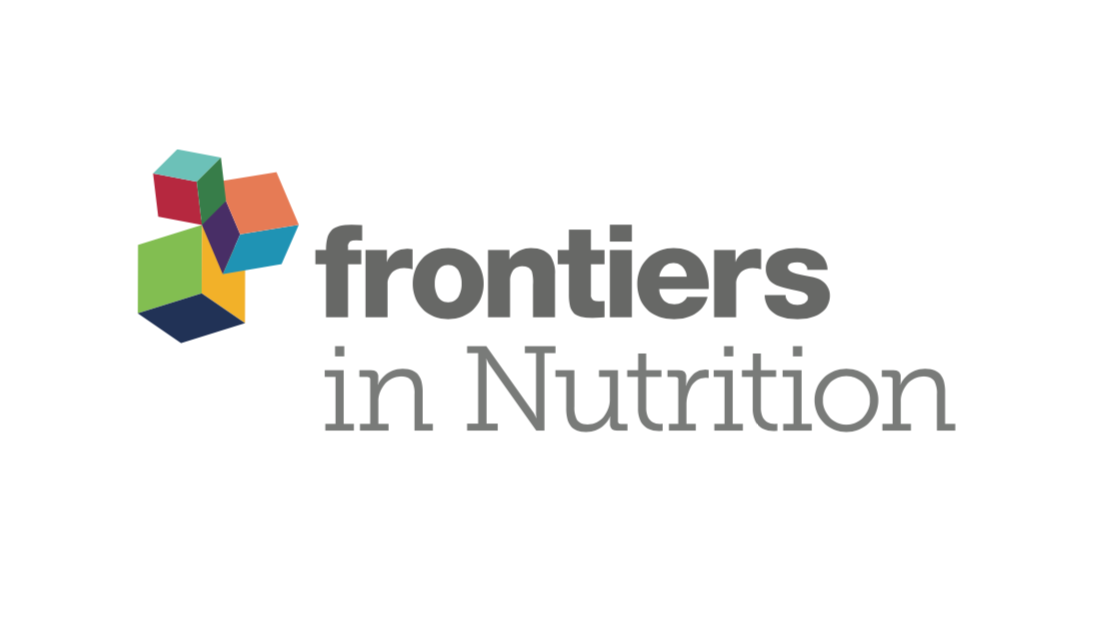
Effect of moderate beer consumption (with and without ethanol) on osteoporosis in early postmenopausal women: Results of a pilot parallel clinical trial
2022 Nov 15 Frontiers in Nutrition Trius-Soler M, Tresserra-Rimbau A, Moreno JJ, Peris P, Estruch R, Lamuela-Raventós RM
Clinical Study Postmenopausal Osteoporosis BeerModerate beer intake does not show a protective effect against bone loss in early post-menopausal women.
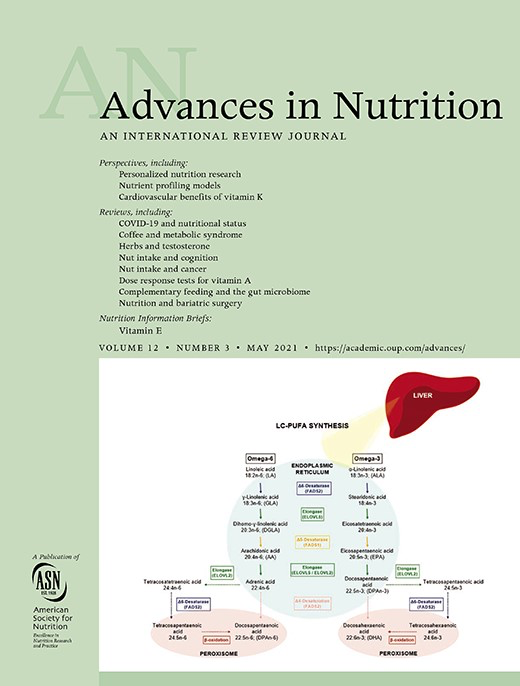
The Role of Prunes in Modulating Inflammatory Pathways to Improve Bone Health in Postmenopausal Women
2022 Sep Advances in Nutrition Damani JJ, De Souza MJ, VanEvery HL, Strock NCA, Rogers CJ
Systematic Review Review Article Prunes Bone Loss Bone Health PlumPrunes demonstrate potential as a dietary intervention to protect against, prevent and even reverse bone loss in osteoporosis, particularly in postmenopausal women.

Utilization of Isoflavones in Soybeans for Women with Menopausal Syndrome: An Overview
2021 Mar 22 International Journal of Molecular Sciences Chen LR, Chen KH
Systematic Review Review Article Osteoporosis Hot Flushes Soybean High Blood Pressure MenopauseIsoflavones found in soybeans can reduce risks of certain cancers and alleviate menopause-related symptoms among women, such as vasomotor syndromes, spinal bone loss, and hypertension.
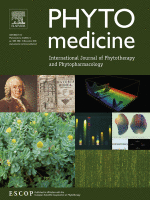
Kirenol inhibits RANKL-induced osteoclastogenesis and prevents ovariectomized-induced osteoporosis via suppressing the Ca2+-NFATc1 and Cav-1 signaling pathways
2021 Jan Phytomedicine Zou B, Zheng J, Deng W, Tan Y, Jie L, Qu Y, et al.
Kir suppresses osteoclastogenesis and the Cav-1/NFATc1 signaling pathway both in vitro and in vivo and protects against OVX-induced osteoporosis. Our findings reveal Kir as a potential safe oral treatment for osteoporosis.
Xi Xian CaoResearch insights are moderated by the Research Hub team and offer an at-a-glance overview of interesting research findings.

2023 The American Journal of Clinical Nutrition
Moderate consumption of blueberries may effectively reduce bone loss in healthy postmenopausal women.
Experimental Study Blueberry Bone Calcium
Moderate consumption of freeze-dried blueberry powder increased net bone calcium retention compared with no treatment in healthy postmenopausal women: a randomized crossover trial
Hodges JK, Maiz M, Cao S, Lachcik PJ, Peacock M, McCabe GP, et al.

2022 Frontiers in Nutrition
Moderate beer intake does not show a protective effect against bone loss in early post-menopausal women.
Clinical Study Beer Osteoporosis Postmenopausal
Effect of moderate beer consumption (with and without ethanol) on osteoporosis in early postmenopausal women: Results of a pilot parallel clinical trial
Trius-Soler M, Tresserra-Rimbau A, Moreno JJ, Peris P, Estruch R, Lamuela-Raventós RM

2022 Advances in Nutrition
Prunes demonstrate potential as a dietary intervention to protect against, prevent and even reverse bone loss in osteoporosis, particularly in postmenopausal women.
Systematic Review Bone Health Plum Prunes
The Role of Prunes in Modulating Inflammatory Pathways to Improve Bone Health in Postmenopausal Women
Damani JJ, De Souza MJ, VanEvery HL, Strock NCA, Rogers CJ

2021 International Journal of Molecular Sciences
Isoflavones found in soybeans can reduce risks of certain cancers and alleviate menopause-related symptoms among women, such as vasomotor syndromes, spinal bone loss, and hypertension.
Systematic Review High Blood Pressure Hot Flushes Menopause Osteoporosis Soybean
Utilization of Isoflavones in Soybeans for Women with Menopausal Syndrome: An Overview
Chen LR, Chen KH

2020 Evidence-Based Complementary and Alternative Medicine
Chrysanthemum coronarium L. extract can both stimulate bone building cells and inhibit bone breaking cells, so has potential as a natural treatment for osteoporosis.
Experimental Study Chrysanthemum
Preventive Effects of Chrysanthemum coronarium L. Extract on Bone Metabolism In Vitro and In Vivo
Kim SA, Lee AS, Hur HJ, Lee SH, Sung MJ
Review Articles
Review articles summarise and critically evaluate the current state of research on a specific topic or field by synthesising multiple primary research studies.

The Role of Prunes in Modulating Inflammatory Pathways to Improve Bone Health in Postmenopausal Women
2022 Sep Advances in Nutrition Damani JJ, De Souza MJ, VanEvery HL, Strock NCA, Rogers CJ
Systematic Review Review Article Prunes Bone Loss Bone Health PlumPrunes demonstrate potential as a dietary intervention to protect against, prevent and even reverse bone loss in osteoporosis, particularly in postmenopausal women.

Utilization of Isoflavones in Soybeans for Women with Menopausal Syndrome: An Overview
2021 Mar 22 International Journal of Molecular Sciences Chen LR, Chen KH
Systematic Review Review Article Osteoporosis Hot Flushes Soybean High Blood Pressure MenopauseIsoflavones found in soybeans can reduce risks of certain cancers and alleviate menopause-related symptoms among women, such as vasomotor syndromes, spinal bone loss, and hypertension.

A Review of Potential Beneficial Effects of Honey on Bone Health
2019 Sep 19 Evidence-Based Complementary and Alternative Medicine Kamaruzzaman MA, Chin KY, Mohd Ramli ES
Review Article OsteoporosisHoney can protect the bone via its antioxidant and anti-inflammatory properties, primarily through its polyphenol content that acts upon several signalling pathways, leading to bone anabolic and antiresorptive effects.
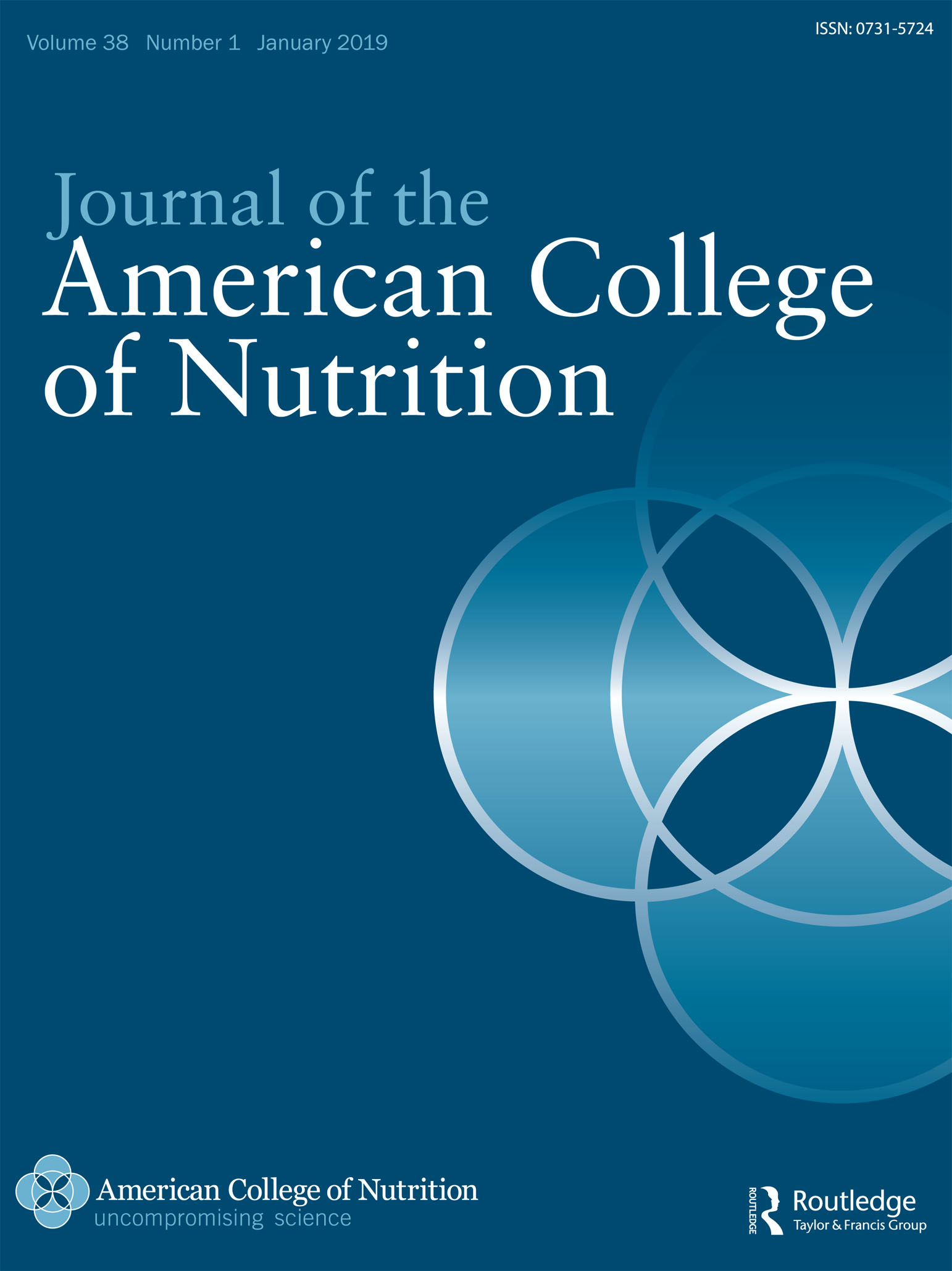
Health Effects of Coconut Oil—A Narrative Review of Current Evidence
2018 Nov 05 Journal of the American College of Nutrition Wallace TC
Limited but consistent evidence supports the topical use of coconut oil for the prevention and treatment of atopic dermatitis and "oil pulling" for preventing dental caries. Coconut oil products may also be beneficial in preventing hair damage due to protein loss during grooming processes and UV exposure. However, limited evidence does not support the use of coconut oil for the prevention or treatment of Alzheimer’s disease, bone loss, or glycemic control. Larger clinical intervention studies are warranted for weight loss and cardiovascular disease. Refined copra oil has a lesser impact on total and LDL cholesterol compared to butter fat but not cis unsaturated vegetable oils. Many claims about coconut oil products are based on animal and/or in vitro studies or studies of purified medium-chain fatty acids, highlighting the need for more human clinical and observational studies.
Review Article Coconut OilClinical Trials
Clinical trials are research studies that involve people and are conducted to evaluate the safety and efficacy of new treatments or interventions, such as drugs, medical devices, or behavioural therapies.

Moderate consumption of freeze-dried blueberry powder increased net bone calcium retention compared with no treatment in healthy postmenopausal women: a randomized crossover trial
2023 Aug The American Journal of Clinical Nutrition Hodges JK, Maiz M, Cao S, Lachcik PJ, Peacock M, McCabe GP, et al.
Experimental Study Clinical Study Randomised Controlled Trial Bone Calcium BlueberryModerate consumption of blueberries may effectively reduce bone loss in healthy postmenopausal women.
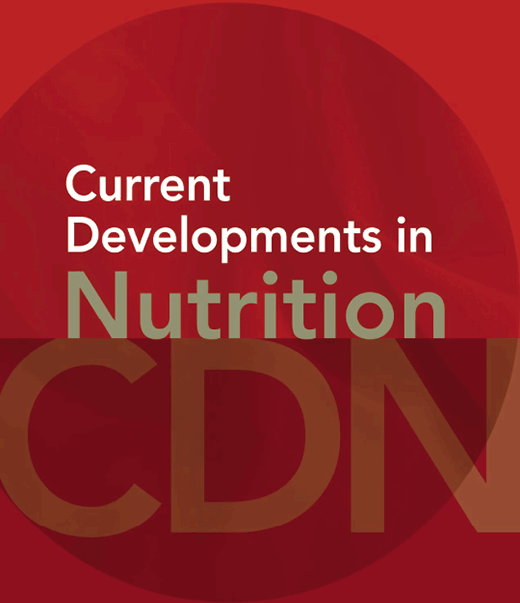
Effect of Whole Blueberry on Bone Biomarkers in Postmenopausal Women with Mild-to-Moderate Bone Loss (P01-029-19)
2019 Jun Current Developments in Nutrition Du C, Norris K, Hanlon Y, Panth P, Imrhan V, Vijayagopal P, et al.
Blueberry consumption showed modest protective effects on bone metabolism, including increased bone formation and decreased fracture risk and inflammation, although no changes in bone density were observed.
Randomised Controlled Trial Clinical Study Postmenopausal Blueberry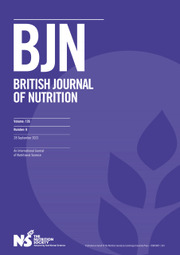
Comparative effects of dried plum and dried apple on bone in postmenopausal women
2011 May 31 British Journal of Nutrition Hooshmand S, Chai SC, Saadat RL, Payton ME, Brummel-Smith K, Arjmandi BH
Randomised Controlled Trial Osteoporosis Bone Mineral Density PlumDried plum consumption enhances bone mineral density in postmenopausal women, primarily by reducing the rate of bone turnover.
Study Protocols
Published study protocols are detailed plans that outline the objectives, methodology, statistical analyses, and organisation of a research study that have been made publicly available for others to review and use as a reference.
Presentation Slides

Experimental Study
Moderate consumption of blueberries may effectively reduce bone loss in healthy postmenopausal women.
Hodges JK, Maiz M, Cao S, Lachcik PJ, Peacock M, McCabe GP, McCabe LD, Cladis DP, Jackson GS, Ferruzzi MG, Lila MA, Bailey RL, Martin BR, Weaver CM

Clinical Study
Moderate beer intake does not show a protective effect against bone loss in early post-menopausal women.
Trius-Soler M, Tresserra-Rimbau A, Moreno JJ, Peris P, Estruch R, Lamuela-Raventós RM

Systematic Review
Prunes demonstrate potential as a dietary intervention to protect against, prevent and even reverse bone loss in osteoporosis, particularly in postmenopausal women.
Damani JJ, De Souza MJ, VanEvery HL, Strock NCA, Rogers CJ

Systematic Review
Isoflavones found in soybeans can reduce risks of certain cancers and alleviate menopause-related symptoms among women, such as vasomotor syndromes, spinal bone loss, and hypertension.
Chen LR, Chen KH

Experimental Study
Chrysanthemum coronarium L. extract can both stimulate bone building cells and inhibit bone breaking cells, so has potential as a natural treatment for osteoporosis.
Kim SA, Lee AS, Hur HJ, Lee SH, Sung MJ

Review Article
Honey can protect the bone via its antioxidant and anti-inflammatory properties, primarily through its polyphenol content that acts upon several signalling pathways, leading to bone anabolic and antiresorptive effects.
Kamaruzzaman MA, Chin KY, Mohd Ramli ES

Experimental Study
Higher iron levels after menopause appear to be risk factors for osteoporosis, and hormone hepcidin, which regulates iron, might be a potential therapeutic target for this condition.
Zhang P, Wang S, Wang L, Shan BC, Zhang H, Yang F, Zhou ZQ, Wang X, Yuan Y, Xu YJ

Animal Study
Dried plums potentially prevent and reverse bone loss in postmenopausal women facing osteoporosis, offering a promising functional food therapy solution with long-lasting effects.
Arjmandi BH, Johnson SA, Pourafshar S, Navaei N, George KS, Hooshmand S, Chai SC, Akhavan NS
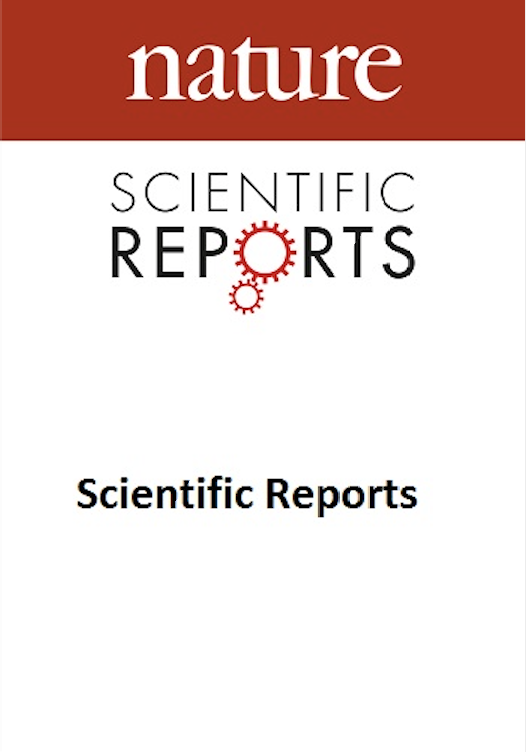
Animal Study
Dried plum was found to be most effective in reducing bone resorption and preventing bone loss caused by ionizing radiation exposure.
Schreurs AS, Shirazi-Fard Y, Shahnazari M, Alwood JS, Truong TA, Tahimic CGT, Limoli CL, Turner ND, Halloran B, Globus RK

Experimental Study
The ethanol extract of FCI potentially counters bone loss in mice by enhancing osteoblast proliferation and differentiation, facilitated by multiple bioactive compounds.
Li J, Lin X, Zhang Y, Liu W, Mi X, Zhang J, Su J

Animal Study
Dried plum intake uniquely improves bone density, promotes growth of vertebral trabecular bone, prevents bone loss in tibia, and positively adjusts bone metabolism.
Rendina E, Hembree KD, Davis MKR, Marlow D, Clarke SL, Halloran BP, Lucas EA, Smith BJ

Experimental Study
Blueberry consumption prior to puberty can significantly prevent bone cell senescence and bone loss induced due to the removal of ovaries in rats.
Zhang J, Lazarenko OP, Blackburn ML, Badger TM, Ronis MJJ, Chen JR

Randomised Controlled Trial
Dried plum consumption enhances bone mineral density in postmenopausal women, primarily by reducing the rate of bone turnover.
Hooshmand S, Chai SC, Saadat RL, Payton ME, Brummel-Smith K, Arjmandi BH
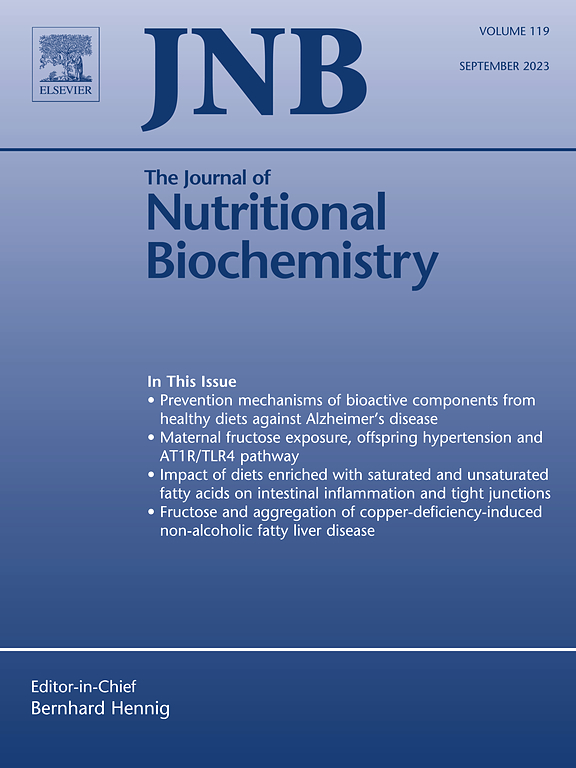
Experimental Study
Blueberry consumption can prevent bone loss and positively impact bone metabolism in ovariectomized rats.
Devareddy L, Hooshmand S, Collins JK, Lucas EA, Chai SC, Arjmandi BH
Executive Summary
Write an executive summary in the form of a blog article on the topic of "Research into Chinese medicine treatment for Bone Loss" summarising the research below and using language that can be easily understood by patients and avoiding medical jargon using a professional and caring tone of voice.
Write an executive summary in the form of a blog article on the topic of "Researched Chinese medicine treatments for Bone Loss" summarising the research below in an objective and easy to understand way, and using language that can be easily understood by patients. Group the article into Chinese medicine treatments first, followed by nutrition and other treatments. Avoid using medical jargon and use a professional and caring tone of voice.
Write me a concise but easy to understand executive summary on the topic of "Chinese medicine treatments for Bone Loss" based on the following research that I will give you. Your summary should be 2 paragraphs long in Australian English spelling and include references to the studies.
A Experimental Study published in 2023 in the journal The American Journal of Clinical Nutrition found that Moderate consumption of blueberries may effectively reduce bone loss in healthy postmenopausal women. The research began with a blueberry dose-response study with ovariectomized rats, used as an experimental model simulating postmenopausal conditions. These rats were fed with various doses of blueberry powder, with the aim to identify an optimal dosage for bone calcium retention. The experiment then translated to a human study where fourteen healthy women, all more than four years past menopause, were examined. A baseline was established, and then each participant was provided with varying dosages of freeze-dried blueberry powder equivalent to defined portions of fresh blueberries, to be consumed daily for a series of six weeks at a time. Tracing calcium in the urine was employed as a method to monitor bone calcium balances in both the rat and human trials. The collected data indicated that both the rat and human subjects benefited from blueberry interventions at lower doses. Higher doses, however, showed no such beneficial impact on bone calcium balance. In human subjects, net bone calcium retention increased with low and medium doses of blueberry consumption. Increased urinary excretion of hippuric acid, a metabolite of the antioxidants present in blueberries, was observed with an increase in blueberry consumption. No significant associations were found between bone resorption biomarkers and the interventions implemented in the study.
A Clinical Study published in 2022 in the journal Frontiers in Nutrition found that Moderate beer intake does not show a protective effect against bone loss in early post-menopausal women. In a 2-year controlled clinical intervention study, 31 postmenopausal women were divided into three groups: 15 consumed beer with alcohol daily, 6 consumed non-alcoholic beer daily, and 10 refrained from consuming any alcohol, non-alcoholic beer, and hop-related products. All participants underwent baseline and follow-up assessments, wherein plasma and urine samples were collected for biochemical testing, and data about their medical history, diet, and exercise habits were also gathered. The comprehensive, detailed examination involved the use of dual-energy X-ray absorptiometry to determine bone mineral density and trabecular bone score. Furthermore, yearly determinations of bone formation and bone resorption markers were made. The study showed that the markers of bone formation had indeed increased in the groups consuming beer with alcohol and non-alcoholic beer compared to the control group over the course of 2 years. However, there were no significant changes noted in the bone mineral density and trabecular bone score among the three groups throughout the study period. These findings contradict the hypothesis that moderate beer consumption could have protective effects against bone loss in early post-menopausal women.
A Systematic Review published in 2022 in the journal Advances in Nutrition found that Prunes demonstrate potential as a dietary intervention to protect against, prevent and even reverse bone loss in osteoporosis, particularly in postmenopausal women. Using sixteen preclinical trials with in vivo rodent models of osteopenia or osteoporosis, researchers investigated the effect of dietary supplementation with prunes. The research shows prunes' osteoprotective capabilities, preventing, reversing bone loss, and exerting anti-inflammatory and antioxidant effects. The prunes or their polyphenol extracts showed properties that decreased malondialdehyde and NO secretion and increased antioxidant enzyme expression. Two clinical trials further investigated prune consumption (50-100 g/d for 6-12 months) on bone health in postmenopausal women. The results of the studies revealed the promising outcome of improved bone mineral density and bone biomarker due to the consumption of dried plums. However, the effect of prunes on oxidative stress and inflammatory mediators remains less understood. The study hence emphasizes the need to investigate prunes' role in modulating the inflammatory and immune pathways related to bone health.
A Systematic Review published in 2021 in the journal International Journal of Molecular Sciences found that Isoflavones found in soybeans can reduce risks of certain cancers and alleviate menopause-related symptoms among women, such as vasomotor syndromes, spinal bone loss, and hypertension. The study overviewed soybeans' chemical composition and focused mainly on isoflavones. The research examined the processes of soybean preparation that includes cleaning, drying, crushing, and dehulling, and extraction methods to derive various soy products, particularly focusing on isoflavones - daidzein, genistein, and S-equol. Various soy products such as refined soy oil, soy lecithin, free fatty acids, glycerol, and soybean meal were discussed, along with the presence of the minor biological constituents in remaining components. The study explored the relationship between isoflavone consumption and disease prevention, particularly in relation to heart disease, cancer incidence—of the breast, bladder, and endometrial and colorectal—and menopause-related symptoms. The therapeutic effects of isoflavones were studied in the context of vasomotor syndromes, spinal bone loss, hypertension regulation, depressive symptoms during pregnancy, and in vitro glycemic control. In contrast, it failed to find definitive effects of isoflavones on cognition improvement and urogenital symptoms. The inconsistencies in defining the ingredients, doses, study durations, and outcomes of isoflavone studies proved challenging for the research.
A Experimental Study published in 2020 in the journal Evidence-Based Complementary and Alternative Medicine found that Chrysanthemum coronarium L. extract can both stimulate bone building cells and inhibit bone breaking cells, so has potential as a natural treatment for osteoporosis. The study examined the effects of Chrysanthemum coronarium L. extracts on in vitro cell cultures and animal models with bone loss. This was done by observing the increase and decrease of bone formation markers in different cell lines, specifically the murine preosteoblastic cell line MC3T3-E1, and the murine macrophage-like cell line RAW264.7 respectively. The results showed that the extract stimulated the differentiation of osteoblasts, cells responsible for bone formation, and inhibited osteoclast differentiation, cells that break down bone. In osteoporotic animal models, the extract prevented bone loss, preserved the structure of the small bones and improved serum bone turnover markers. This implies that the extract has promising potential as a natural therapy for osteoporotic bone loss.
A Review Article published in 2019 in the journal Evidence-Based Complementary and Alternative Medicine found that Honey can protect the bone via its antioxidant and anti-inflammatory properties, primarily through its polyphenol content that acts upon several signalling pathways, leading to bone anabolic and antiresorptive effects. This review aims to summarize the current evidence on the effects of honey on bone health. The evidence reported so far indicates a skeletal-beneficial effect of honey in animal models of osteoporosis. However, the number of studies on humans is limited. The literature shows that honey has promising skeletal-beneficial effects in preventing osteoporosis. Many types of honey have been shown to prevent bone loss in various animal models via its high antioxidant and anti-inflammatory properties. Nevertheless, the efficacy of honey seems to be dose-dependent, whereby very high or low dosage will not produce desirable results on the skeleton.
A Experimental Study published in 2018 in the journal Journal of Molecular Endocrinology found that Higher iron levels after menopause appear to be risk factors for osteoporosis, and hormone hepcidin, which regulates iron, might be a potential therapeutic target for this condition. In the study, researchers applied genetic modification techniques to alter the production of endogenous hormone hepcidin in a mouse model, aiming to affect the iron levels in the body. Making use of both knockout and overexpression murine models, researchers focused specifically on the correlational aspects of hepcidin levels and bone loss. Further to that, the impact of iron overload on reactive oxygen species (ROS) activity was tested, as well as its effect on the slowed down work of primary osteoblasts. On the other hand, the effect of iron depletion was observed, presented as the reversed phenomenon through inhibiting the functions of the primary osteoclasts. Through this work, researchers investigated how iron accumulation interferes with general bone health in postmenopausal conditions. They further verified the 'Huang's hypothesis' - proposed in previous studies - about the potential therapeutic value of hepcidin for postmenopausal osteoporosis.
A Animal Study published in 2017 in the journal Nutrients found that Dried plums potentially prevent and reverse bone loss in postmenopausal women facing osteoporosis, offering a promising functional food therapy solution with long-lasting effects. The methodology focused on examining the influence of dried plum in preventing and reversing bone loss related to osteoporosis. Two populations were studied: an ovariectomized rat model, which simulates the condition in postmenopausal women, and actual osteopenic postmenopausal women. The subjects were given measured servings of dried plums and their bone mass and structure were analyzed over a certain period. The researchers also attempted to understand the possible mechanisms through which dried plum exerts its bone-protective effects. In terms of results, evidence suggested that dried plum effectively retarded bone loss in both the rat model and human subjects. An intriguing observation was from a follow-up study of the one-year clinical trial conducted five years earlier. Women who had been in the trial consuming 100 g dried plum per day were found to have retained bone mineral density more efficiently than comparative controls. Dried plum's beneficial effect was hypothesised to originate from its bioactive compounds. The overall findings strongly advocate dried plum as a functional food therapy for preventing osteoporosis in postmenopausal women.
A Animal Study published in 2016 in the journal Scientific Reports found that Dried plum was found to be most effective in reducing bone resorption and preventing bone loss caused by ionizing radiation exposure. The methodology of the study involved evaluating different interventions with antioxidant or anti-inflammatory activities; these included an antioxidant cocktail, dihydrolipoic acid, ibuprofen, and dried plum. These substances were tested for their ability to reduce the expression of resorption-related genes in marrow cells after these cells were exposed to gamma rays or simulated space radiation. This involved monitoring the effects on key genes related to bone resorption like Nfe2l2, Rankl, Mcp1, Opg, and TNF-α. In the discussion of results, dried plum was highlighted as the most effective intervention in reducing the expression of genes related to bone resorption. It significantly blunted the gene effects which tend to escalate bone-loss. Moreover, dried plum was additionally effective in preventing later cancellous bone loss caused by irradiation, either from photons or heavy ions. The finding suggests that dietary supplementation with dried plum might offset the skeletal effects of radiation exposures, whether in the context of space or on Earth.
A Experimental Study published in 2016 in the journal Evidence-Based Complementary and Alternative Medicine found that The ethanol extract of FCI potentially counters bone loss in mice by enhancing osteoblast proliferation and differentiation, facilitated by multiple bioactive compounds. In this study, the researchers scrutinized the antiosteoporosis potential of the ethanol extract of FCI in mice experiencing bone loss due to ovariectomy, a process likened to human menopause. In the process, the antiosteoporosis fraction derived from FCI was isolated and cleansed using a technique known as high-speed countercurrent chromatography, which resulted in the successful isolation of the principle bioactive compounds. The researchers found that, among the separations, the ethyl acetate fraction exhibited remarkable antiosteoporosis activity. Upon further analysis, the foremost compounds were identified as acacetin, apigenin, luteolin, and linarin. Furthermore, these compounds were found to stimulate the proliferation and differentiation of osteoblasts - the cells responsible for bone formation. The process was potentially mediated by the activation of the AKT signaling pathway and the upregulation of certain genes such as Runx2, OCN, OPN, and COL I. The collective efforts of these bioactive compounds played a crucial role in the observed antiosteoporosis effects, suggesting that the effectiveness of FCI is not reliant on a single component, but an ensemble of elements working in tandem.
A Animal Study published in 2013 in the journal PLOS One found that Dried plum intake uniquely improves bone density, promotes growth of vertebral trabecular bone, prevents bone loss in tibia, and positively adjusts bone metabolism. Adult osteopenic mice were subjected to a diet supplemented with 25% of various dried fruits such as dried plum, apple, apricot, grape, and mango for a period of 8 weeks. Body and spine bone mineral density improvement was monitored in these mice, with particular focus on the anabolic effect on trabecular bone in the vertebra and prevention of bone loss in the tibia. The osteoclast differentiation and osteoblast and glutathione activity were also assessed, to better understand the potential mechanisms through which dried plum may exert its osteoprotective effects. The results of the study showed that while dried plum, apricot and grape diets led to improvements in bone mineral density, dried plum was the only fruit that resulted in an anabolic effect on trabecular bone in the vertebra and helped prevent bone loss in the tibia. Biomechanical properties showed restoration, aligning with the changes observed in the spine's trabecular bone. Examining the difference in effects between the various fruits, it was found that dried plum was unique in its ability to balance the down-regulation of osteoclast differentiation and up-regulation of osteoblast and glutathione activity. The alterations in bone metabolism and antioxidant status and their transformative impact on bone health were unique to dried plum when compared with other dried fruits.
A Experimental Study published in 2012 in the journal AGE found that Blueberry consumption prior to puberty can significantly prevent bone cell senescence and bone loss induced due to the removal of ovaries in rats. The methodology used in the study involves two parts: an in-vivo study and an in-vitro study. In the in-vivo portion, immature rats were fed a diet supplemented with blueberries either throughout their development or only prior to puberty, and then subjected to ovariectomy. The changes in bone collagen matrix and senescence markers were then examined. In the in-vitro part, three different bone cell lines were studied for cellular senescence pathways. The bone cells were treated with serum either from ovariectomized rats or from blueberry-fed ovariectomized rats to observe the effects on osteoblastic cell senescence pathways and potential to differentiate into adipocytes. The results showed that ovariectomy led to bone loss, a decrease in collagen and Sirt1, and an increase in the senescence markers collagenase and p16/p21. However, feeding blueberry-supplemented diet to rats prior to puberty prevented these ovariectomy-induced effects. The in-vitro studies revealed that collagen inhibited senescence in a dose-response manner, and serum from ovariectomized rats accelerated osteoblastic cell senescence pathways. It also revealed that bone cell senescence is associated with decreased Sirt1 expression and increased p53, p16, and p21. However, this acceleration did not occur when cells were treated with serum from blueberry-fed ovariectomized rats.
A Randomised Controlled Trial published in 2011 in the journal British Journal of Nutrition found that Dried plum consumption enhances bone mineral density in postmenopausal women, primarily by reducing the rate of bone turnover. The research studied 160 osteopenic postmenopausal women from 1 to 10 years postmenopause, who were not receiving any hormone replacement therapy or medication affecting bone metabolism. Participants were randomly divided into two treatment groups, one consuming dried plums and the other eating dried apples, with both groups also receiving daily dosages of calcium and vitamin D. Bone mineral density was measured at the beginning and end of the study using dual-energy X-ray absorptiometry. Blood samples were taken at the start, then every 3 months to evaluate bone biomarkers. Physical activity and dietary factors were monitored as potential covariates throughout the study. Dried plums significantly boosted the bone mineral density in the ulna (one of the two bones in the forearm) and spine compared to dried apples. This tendency could only be seen in dried plums - they drastically reduced serum levels of bone turnover markers, specifically bone-specific alkaline phosphatase and tartrate-resistant acid phosphatase-5b. This confirms that dried plums can indeed improve the bone mineral density in postmenopausal women, in part by suppressing the rate of bone turnover.
A Experimental Study published in 2008 in the journal The Journal of Nutritional Biochemistry found that Blueberry consumption can prevent bone loss and positively impact bone metabolism in ovariectomized rats. The research involved thirty 6-month-old female Sprague-Dawley rats. Some rats were ovariectomized to simulate post-menopausal conditions and then divided into three groups: Sham-operated, control (ovariectomized but no intervention), and a group that was ovariectomized and given a 5% blueberry diet. After being on this diet for 100 days, the effects of the blueberries on bone health were evaluated through the assessment of Bone Mineral Density (BMD) and content in the whole body, right tibia, right femur, and fourth lumbar vertebra through dual-energy X-ray absorptiometry. In terms of the results, the ovariectomy caused a loss of BMD in the whole body, tibia, femora, and lumbar region, whereas the blueberry diet prevented this loss in the whole body. It also somewhat reduced the loss in the tibia and femur. The bone-protective effects of the blueberries were attributed to them suppressing the ovariectomy-induced increase in bone turnover. This was shown by reduced levels of various cellular components linked to bone metabolism in the femoral bone and serum of rats on the blueberry diet, compared to the ovariectomized control group.
Moderation Tools
Topic
Sign In
Users not signed in are limited to viewing the 5 most recent items of content.